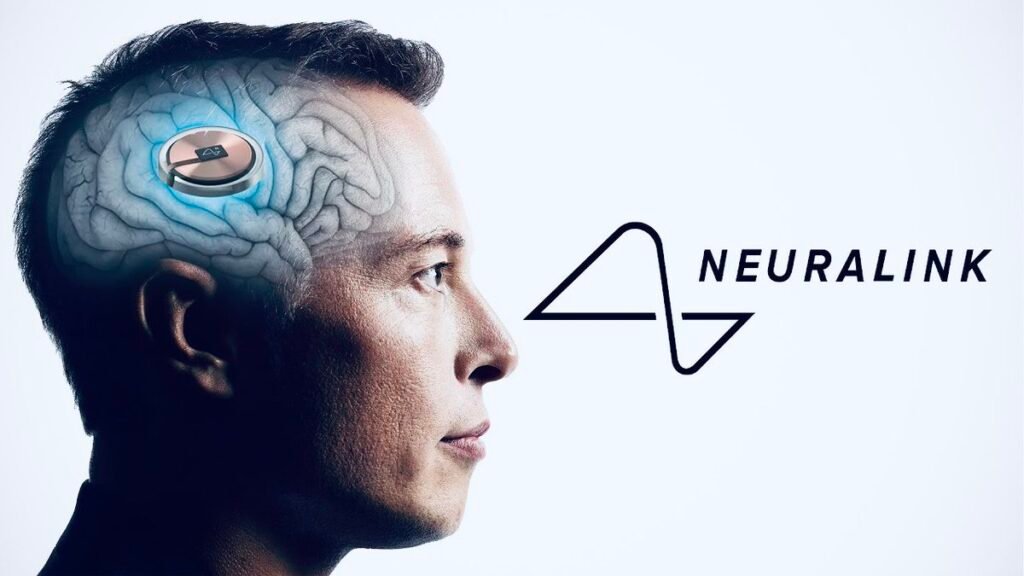
Introduction to Neuralink and Brain-Machine Interfaces
Neuralink, a neurotechnology company co-founded by Elon Musk in 2016, aims to integrate the human brain with advanced technology through brain-machine interfaces (BMIs). The vision behind Neuralink revolves around improving the quality of life for individuals with neurological disorders and creating a seamless interaction between humans and machines. Through innovative research and development, Neuralink seeks to enhance cognitive capabilities, allowing for unprecedented communication channels between the human brain and various technological systems.
Brain-machine interfaces refer to systems that facilitate direct communication between the brain and external devices. These interfaces typically involve the use of sensors that decode neural activity, transmitting information to external devices such as computers or prosthetics. As technology advances, the potential applications of BMIs continue to expand, encompassing areas such as medical rehabilitation, gaming, and even cognitive enhancement. For instance, BMIs could significantly improve the experience of individuals with movement disabilities, enabling them to control robotic limbs or other assistive devices through thought alone.
Neuralink’s journey has been marked by groundbreaking developments in technology, culminating in its recent approval for clinical trials in Canada. This approval is a pivotal moment, as it allows Neuralink to begin testing its innovative brain chip in human subjects, therefore paving the way for the eventual commercialization of this technology. The significance of this approval lies not just in Neuralink’s ambitions but in the broader implications for the field of BMIs. As research progresses, the potential for transformative impacts on both healthcare and everyday life becomes increasingly apparent, thereby making Neuralink a key player in the future of human-machine interaction.
Recent Developments Leading to the Approval
The journey toward Neuralink receiving approval for its brain chip trial in Canada is marked by several significant milestones and rigorous efforts in both technology and regulatory compliance. Originally founded in 2016, Neuralink aimed to pioneer advancements in brain-machine interfaces with high hopes for innovative medical applications. One of their earlier trials, conducted in the United States, provided critical data on the viability and safety of their technology, effectively laying the groundwork for subsequent projects.
In 2021, the company received similar approval from the U.S. Food and Drug Administration (FDA), marking a pivotal moment that demonstrated regulatory confidence in their approach. The results from this trial showcased an increased understanding of how brain chips can interface with neural circuitry, addressing both efficacy and safety concerns that are paramount in neurotechnology. Following these developments, Neuralink began exploring possibilities for international expansion, particularly in Canada, where regulatory frameworks are also conducive to innovative medical trials.
The regulatory challenges encountered during the approval process for the Canadian trial were multifaceted. They involved addressing ethical considerations related to human experimentation and ensuring robust consent procedures for participants. Additionally, the company had to navigate the complex landscape of international compliance, which emphasizes stringent safety assessments and thorough clinical evaluations. With advancements in neuroscientific research, the understanding of neuroplasticity and biocompatibility has greatly improved, enabling developers to propose more effective brain machine interfaces.
Overall, the approval process reflects a broader acceptance of neurotechnology within the medical community, indicating progression toward potential therapies for individuals with neurological disorders. As technology continues to advance, the combination of regulatory scrutiny and innovative research will play a significant role in shaping the future trajectory for brain-machine interfaces. Neuralink’s success in Canada signifies not only a step forward for the company but also highlights the potential implications for the field as a whole.
Understanding the Brain Chip Technology
The brain chip technology developed by Neuralink represents a significant advancement in the field of brain-machine interfaces (BMIs). At its core, the brain chip is designed to facilitate direct communication between the human brain and external devices, enabling a myriad of applications ranging from medical treatments to enhanced cognitive functions. The primary component of this technology is the chip itself, which is intricately designed to interface with neurons in the brain.
Neuralink’s brain chip employs ultra-thin electrodes, which are pivotal in establishing a connection with neuronal cells. These electrodes are significantly thinner than a human hair, thereby minimizing tissue damage upon implantation. The microelectrodes can detect electrical signals produced by neurons as well as stimulate brain regions by delivering electrical impulses when necessary. This bidirectional communication allows for a detailed understanding of brain activity and an eventual interaction with external devices, such as computers or prosthetic limbs.
One of the remarkable features of the Neuralink chip is its capability to transmit a large volume of data at high speeds. The design incorporates advanced technologies such as wireless communication protocols, which eliminate the need for cumbersome wires and enhance user mobility. These innovations ensure that the brain chip can operate effectively without hindrance, fostering seamless integration into the user’s daily life.
Safety considerations are paramount in the development of this technology. Extensive research and testing have been conducted to assess potential risks associated with implantation and operation of the brain chip. Biocompatibility of materials used, as well as strategies for minimizing inflammation and infection at the implantation site, are central to the design process. By focusing on safety, Neuralink aims to ensure that its brain chip technology not only advances scientific knowledge but also prioritizes the well-being of individuals involved in clinical trials.
Implications for Medical Research and Treatment
The approval of Neuralink’s brain chip trial in Canada heralds significant implications for medical research and treatment methodologies, particularly relating to neurological disorders. Brain-Machine Interfaces (BMIs) have emerged as a promising frontier in the realm of neuroscience, potentially offering transformative solutions for conditions such as Parkinson’s disease, Alzheimer’s disease, and epilepsy. These disorders currently lack comprehensive treatment options, often leaving patients to grapple with debilitating symptoms that severely affect their quality of life.
Firstly, BMIs have the potential to restore lost sensory functions, making them particularly valuable for individuals suffering from severe disabilities or neurological impairments. By interpreting brain signals and translating them into actionable outputs, these devices might enable users to control external devices, such as prosthetics or computers, with their thoughts. This capability could empower individuals who were previously dependent on caregivers to regain a measure of independence, thus enhancing their overall well-being.
Moreover, the integration of advanced neural technologies can pave the way for personalized medicine in treating neurological conditions. By leveraging real-time data obtained from brain activity, clinicians may fine-tune treatment plans tailored to the specific needs of each patient. For instance, in the context of epilepsy, BMIs could monitor brain activity to predict seizures and provide timely interventions. This personalized approach not only optimizes patient care but also enriches our understanding of complex brain functions, ultimately leading to new therapeutic avenues.
Lastly, the advancements brought about by Neuralink’s initiatives could spur further research into the underlying mechanisms of various neurological disorders. By facilitating deeper insights into brain functionalities and dysfunctions, this trial represents a critical step toward decoding the intricacies of the human brain and developing more effective treatment strategies.
Ethical Considerations and Public Concerns
The advent of brain-machine interfaces (BMIs), particularly with Neuralink’s recent approval for brain chip trials in Canada, has sparked a range of ethical concerns that merit in-depth examination. One primary issue lies in the realm of privacy risks. The prospect of devices that connect directly with human cognitive processes raises significant questions about data security. How can individuals be assured that their thoughts, preferences, and neurological data will remain confidential and protected from unauthorized access or exploitation? The potential for misuse of such technology by governments, corporations, or individuals poses a substantial ethical dilemma that cannot be overlooked.
Moreover, there are apprehensions regarding the potential for these technologies to be misused. For instance, what safeguards will be in place to prevent coercive uses of BMIs, such as in criminal justice systems or during military operations? Such implications could lead to a society where control over an individual’s thoughts and actions becomes a reality, blurring the lines of autonomy and consent. It is critical to ensure that the development of BMIs prioritizes ethical guidelines that protect participants from harm and maintain the fundamental human right to think freely.
Sociocultural implications further complicate the conversation surrounding BMIs. The merging of human cognition with machines could lead to societal divides, creating an environment where access to advanced technology becomes inequitable. This specter of enhancement might privilege certain demographics over others, creating new forms of discrimination. Public sentiment towards brain-machine interface innovations reflects a blend of fascination and apprehension, with many expressing unease about the future implications of such advancements. Therefore, a robust dialogue incorporating diverse perspectives is essential to navigate the ethical landscape posed by BMIs and to foster a society that embraces technological benefits while mitigating its risks.
The Future of Brain-Machine Interfaces Beyond Neuralink
The realm of brain-machine interfaces (BMIs) is rapidly expanding, with numerous companies and research initiatives emerging alongside Neuralink. This burgeoning landscape presents a diverse array of innovations and a competitive environment that may significantly impact the future of neurotechnology. Many firms are actively developing BMI technologies that could provide various functionalities, from medical applications to enhancing cognitive capacities.
Companies such as Kernel and Paradromics are venturing into different aspects of BMI development. Kernel focuses on non-invasive neurotechnology to enhance mental performance and unlock deeper cognitive insights. Their approach emphasizes extensive data collection and analysis, harnessing advanced algorithms to interpret neural signals. Meanwhile, Paradromics is pioneering high-data-rate BMIs, which aim to facilitate communication and control for individuals living with neurological disorders. These ventures illustrate the potential for diverse applications in healthcare and cognitive enhancement.
In addition to private sector endeavors, academic institutions and government-funded initiatives are contributing to the advancement of BMIs. Research programs globally are exploring innovative technologies that span invasive and non-invasive methodologies. These initiatives often focus on understanding brain function and developing devices capable of interfacing with the brain in increasingly sophisticated manners. Collaborations between universities, research institutions, and technology firms are cultivating an environment rich in cross-disciplinary innovation.
Moreover, ethical considerations surrounding the deployment of BMIs are becoming central to discussions in the field. As technology advances, careful deliberation regarding issues such as accessibility, privacy, and potential misuse is critical. The future directions of BMI research and development will likely be shaped not only by technological breakthroughs but also by regulatory frameworks and public discourse surrounding the implications of such technologies on society.
In conclusion, the future of brain-machine interfaces extends far beyond Neuralink, with a wide range of companies and research initiatives positioning themselves to influence this exciting field. The potential applications and ethical considerations will continue to drive advancements and discussions in the coming years.
Testing and Trial Phases: What to Expect
The approval of Neuralink’s brain chip trial in Canada marks a significant milestone in the development of brain-machine interfaces (BMIs). The trial is structured to unfold in several phases, each designed to rigorously assess the safety and efficacy of the brain chip technology. Initially, the trial will focus on pre-clinical studies which aim to ensure that the device can be safely implanted in human subjects without adverse effects. These studies may involve extensive lab testing, including simulations and animal studies, to evaluate how the chip interacts with biological systems.
Upon successful completion of pre-clinical stages, the trial will progress to human testing. The criteria for participant selection will be meticulously defined and are expected to include individuals with specific medical conditions that the brain chip seeks to address, such as neurological disorders or severe motor function impairments. A diverse participant pool may be targeted to encompass different ages, backgrounds, and conditions to understand the technology’s broader impact and potential benefits.
Key objectives of the study will be to monitor not only the safety of the technology but also how well it performs its intended functions. This includes assessing its capability to translate neural signals into actionable commands and examining the degree of interaction between the brain chip and the human nervous system. Researchers will be keenly observing various outcomes, such as the improvement in the quality of life for participants and the overall functionality of the brain-machine interface in everyday situations.
Ultimately, success in these trial phases could usher in a new era for brain-machine interfaces, allowing for advanced applications in medicine and beyond. The outcomes of these studies will provide critical insights into the technology’s long-term viability, paving the way for future innovations that integrate human cognition with machines.
Potential Societal Changes Due to Brain-Machine Interfaces
The advent of brain-machine interfaces (BMIs) has the potential to profoundly transform various facets of society, particularly in daily life, work, and communication. As these technologies, such as those developed by Neuralink, become more integrated into the fabric of our existence, we may witness significant enhancements in cognitive capabilities. This advancement could enable individuals to process information at unprecedented speeds, leading to increased productivity and efficiency in both personal and professional settings.
In the workplace, BMIs may revolutionize industries by allowing for seamless collaboration and communication among team members. Imagine a scenario where employees can share thoughts and ideas instantaneously with one another, transcending linguistic and physical barriers. This could facilitate swifter decision-making processes and foster innovative solutions to complex problems. Moreover, cognitive enhancements provided by BMIs might lead to the emergence of new roles and professions, as tasks that require extensive mental effort could be streamlined and managed more effectively.
The societal impact of widespread BMI use could manifest in other areas as well. For instance, education systems might evolve to incorporate BMI technologies, allowing students to access and retain knowledge more rapidly. This acceleration in learning could establish a more informed and skilled workforce, ultimately benefiting the economy. Furthermore, BMIs could foster improved interpersonal relationships by enabling deeper emotional connections and understanding through shared mental experiences.
However, the proliferation of brain-machine interfaces also raises ethical considerations and challenges that society must address. Issues related to privacy, consent, and the potential for misuse of such technology necessitate a comprehensive framework to ensure equitable access and protection. As we move toward a future where BMIs become commonplace, it will be crucial to engage in thoughtful dialogue regarding these implications to harness the full potential of brain-machine interfaces while safeguarding societal values.
Conclusion: The Path Ahead for Neuralink and BMIs
As Neuralink moves forward with its approved brain chip trial in Canada, it stands at the forefront of potential advancements in brain-machine interfaces (BMIs). The approval marks a significant milestone, indicating regulatory bodies’ cautious optimism toward the safety and efficacy of such innovative technologies. The approval serves not only as a validation of Neuralink’s engineering capabilities but also underscores the broader implications of BMIs in medical science and human enhancement.
Throughout this discussion, we have examined the critical aspects surrounding Neuralink’s developments. Firstly, the potential applications range from assisting individuals suffering from neurological disorders to enhancing cognitive functions in healthy individuals. These advancements could transform treatments for conditions such as paralysis, depression, and epilepsy, offering hope for millions. However, alongside these possibilities arise pressing ethical questions regarding accessibility, consent, and the long-term impacts on human cognition and identity.
Moreover, the importance of ongoing research cannot be overstated. Future studies are crucial not only for refining the technology but also for exploring its implications in various sectors, including education, entertainment, and communication. Engaging the public in these discussions will be vital as the technology evolves. Transparency, ethical frameworks, and public understanding will serve as essential pillars for promoting responsible innovation in brain-machine interfaces.
In conclusion, the path ahead for Neuralink and BMIs is filled with promise and challenges. As we look to the future, fostering collaboration among scientists, ethicists, and the public will be paramount in ensuring that advances in brain-machine interfaces benefit society as a whole. A balanced approach will pave the way for innovations that could enhance human capabilities while addressing the ethical intricacies of such transformative technologies.





